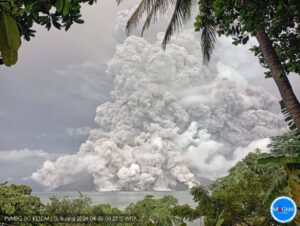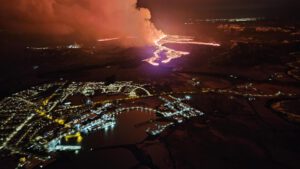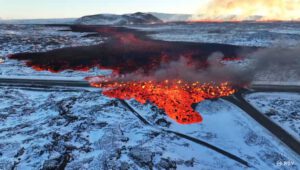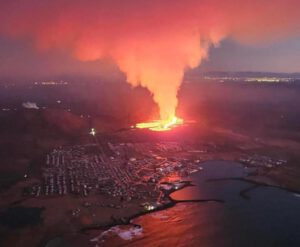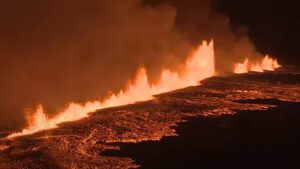New Volcanic Eruption in Iceland: Kilometers-Long Fissure at Sundhnukur
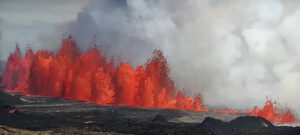 Following a brief seismic activity, the anticipated volcanic eruption in Iceland has begun. At 12:46 PM local time (14:46 CEST), a new fissure opened in the Sundhnukur crater row, with its full opening possibly not yet complete. Over several kilometers, lava fountains are shooting into the sky, accompanied by strong steam emissions. The event can be observed in clear weather via various live cameras.
Following a brief seismic activity, the anticipated volcanic eruption in Iceland has begun. At 12:46 PM local time (14:46 CEST), a new fissure opened in the Sundhnukur crater row, with its full opening possibly not yet complete. Over several kilometers, lava fountains are shooting into the sky, accompanied by strong steam emissions. The event can be observed in clear weather via various live cameras.
So far, the fissure has reached a length of about 2500 meters. According to the Icelandic Meteorological Office (IMO), it is continuing to grow and extending southwards towards Grindavik. The lava fountains are reaching heights of 50 to 60 meters.
The fissure runs through the most recently active crater in the Sundhnukur row. As it grew through this crater, a lava fall formed over the flank of the approximately 30-meter-high cone.
The fissure opened at a point south of the crater, which was visible in the live camera footage and had been notable for persistent steam emissions since the end of the eruption on May 9.
The lava fountains are feeding a broad lava flow, initially spreading perpendicular to the fissure in an east-west direction. A large amount of fast-flowing lava is being produced, posing a renewed threat to Grindavikurvegur, which could be interrupted. The Svartsengi geothermal power plant might also be reached by the lava.



